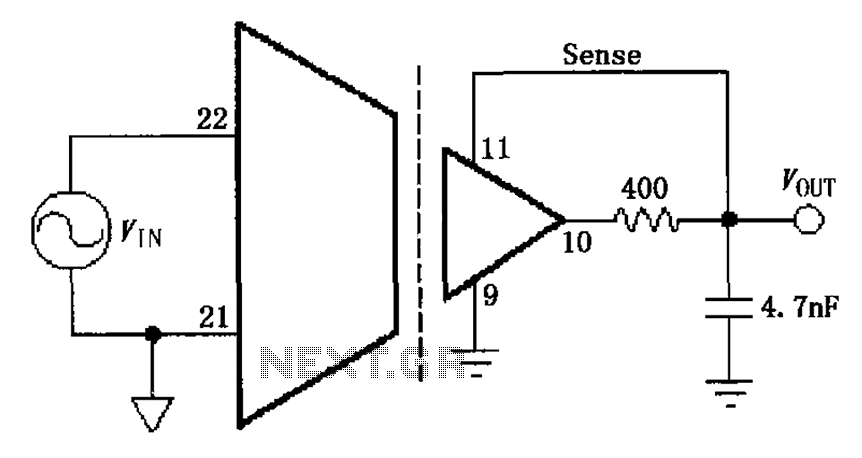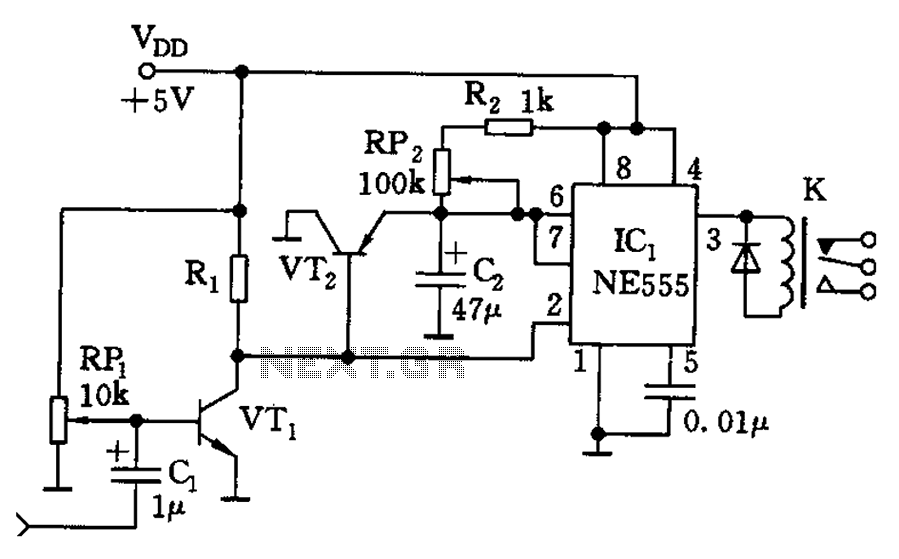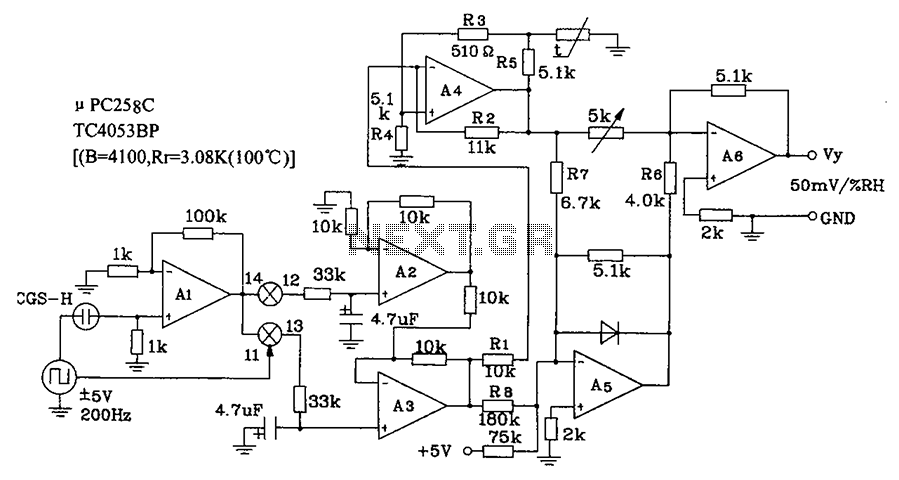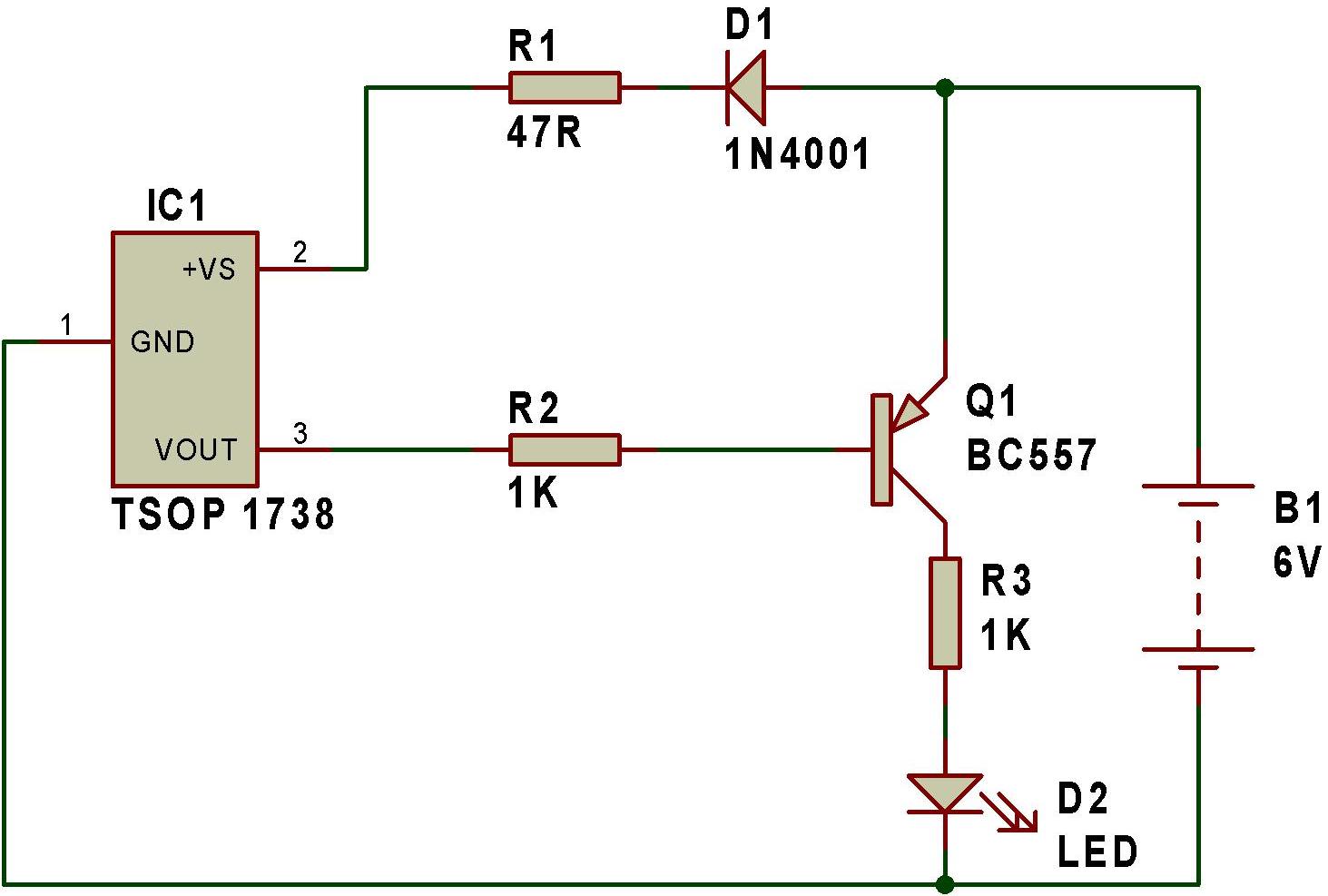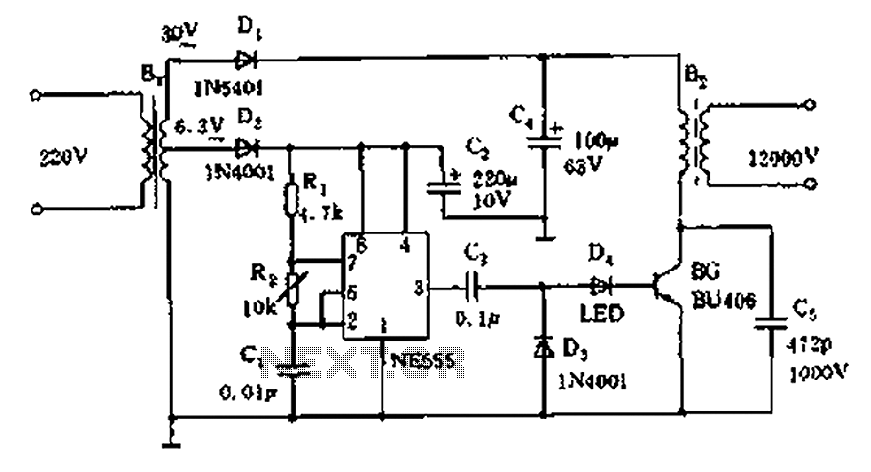
DTMF coding multiple-channel infrared remote control switch circuit

The DTMF codec stands for dual-tone multi-frequency codec. The multiple-channel infrared remote control switch circuit that incorporates the DTMF is depicted in the figure. It consists of an infrared remote control signal emitter, an infrared receiving signal amplifier, a DTMF signal decoder, and a 12-channel data decoding distributor.
The DTMF codec is integral to the functionality of the multiple-channel infrared remote control switch circuit. This circuit utilizes the dual-tone multi-frequency signaling method to transmit control signals over infrared light, allowing for the remote operation of various devices.
The infrared remote control signal emitter generates modulated infrared signals that carry DTMF tones. These tones are transmitted to the receiving end, where the infrared receiving signal amplifier boosts the incoming signals for better processing. The amplified signals are then sent to the DTMF signal decoder, which interprets the dual-tone frequencies and converts them into binary data corresponding to the specific commands.
Following the decoding process, the 12-channel data decoding distributor takes the binary data and routes it to the appropriate output channels. Each channel can control a different device or function, enabling the user to manage multiple devices seamlessly with a single remote control unit. The design of this circuit emphasizes efficiency and reliability, making it suitable for various applications, including home automation and industrial control systems.
Overall, the integration of the DTMF codec within the infrared remote control switch circuit enhances its versatility and functionality, allowing for a sophisticated control mechanism that is both user-friendly and effective.The DTMF codec is the abbreviation of the dual-tone multi-frequency codec. The multiple-channel infrared remote control switch circuit which is composed of the DTMF is as shown in the figure. It is composed of the infrared remote control signal emitter, the infrared receiving signal amplifier, the DTMF signal decoder, the 12-channel data decoding distributor..
🔗 External reference
The DTMF codec is integral to the functionality of the multiple-channel infrared remote control switch circuit. This circuit utilizes the dual-tone multi-frequency signaling method to transmit control signals over infrared light, allowing for the remote operation of various devices.
The infrared remote control signal emitter generates modulated infrared signals that carry DTMF tones. These tones are transmitted to the receiving end, where the infrared receiving signal amplifier boosts the incoming signals for better processing. The amplified signals are then sent to the DTMF signal decoder, which interprets the dual-tone frequencies and converts them into binary data corresponding to the specific commands.
Following the decoding process, the 12-channel data decoding distributor takes the binary data and routes it to the appropriate output channels. Each channel can control a different device or function, enabling the user to manage multiple devices seamlessly with a single remote control unit. The design of this circuit emphasizes efficiency and reliability, making it suitable for various applications, including home automation and industrial control systems.
Overall, the integration of the DTMF codec within the infrared remote control switch circuit enhances its versatility and functionality, allowing for a sophisticated control mechanism that is both user-friendly and effective.The DTMF codec is the abbreviation of the dual-tone multi-frequency codec. The multiple-channel infrared remote control switch circuit which is composed of the DTMF is as shown in the figure. It is composed of the infrared remote control signal emitter, the infrared receiving signal amplifier, the DTMF signal decoder, the 12-channel data decoding distributor..
🔗 External reference
